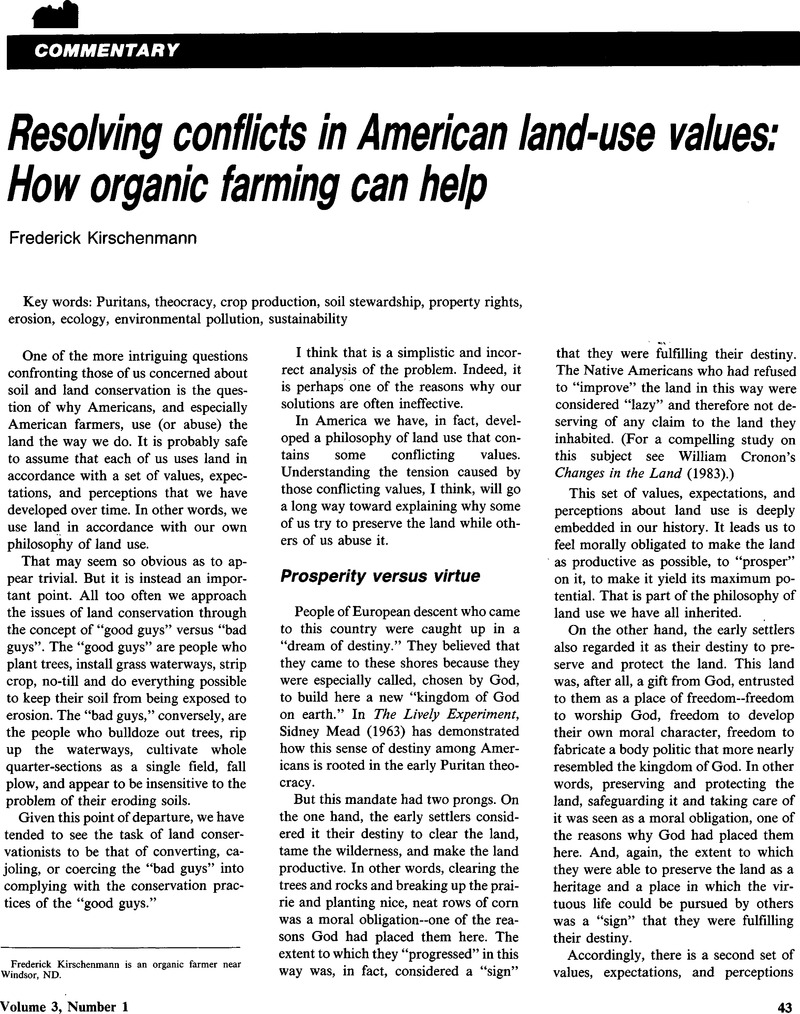Article contents
Resolving conflicts in American land-use values: How organic farming can help
Published online by Cambridge University Press: 30 October 2009
Abstract

Keywords
- Type
- Commentary
- Information
- Copyright
- Copyright © Cambridge University Press 1988
References
- 3
- Cited by




